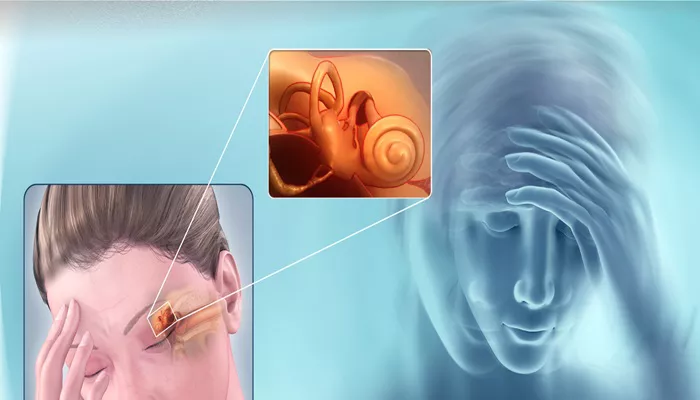Paroxysmal hypotension, characterized by sudden and transient drops in blood pressure, can be a perplexing and concerning condition. Understanding the underlying causes is crucial for effective diagnosis and management. This article delves into the seven major causes of paroxysmal hypotension, providing insights into their mechanisms, symptoms, and potential treatments.
1. Autonomic Dysfunction
Autonomic dysfunction, also known as dysautonomia, refers to the improper functioning of the autonomic nervous system, which regulates involuntary body functions such as heart rate, blood pressure, and digestion. This condition can lead to paroxysmal hypotension due to the inability of the body to properly regulate blood pressure.
Mechanisms:
Impaired Vasoconstriction: The autonomic nervous system fails to constrict blood vessels adequately in response to positional changes, leading to sudden drops in blood pressure.
Heart Rate Variability: Irregularities in heart rate can affect blood pressure stability, especially during physical exertion or stress.
Symptoms:
- Dizziness
- Fainting (syncope)
- Fatigue
- Nausea
Management:
Medications: Midodrine and fludrocortisone can help increase blood pressure.
Lifestyle Modifications: Increasing salt and fluid intake, wearing compression stockings, and avoiding rapid changes in posture.
SEE ALSO: How to Differentiate And Diagnose Postural Hypotension
2. Dehydration
Dehydration significantly impacts blood volume and pressure. When the body loses more fluids than it consumes, it can lead to paroxysmal hypotension, particularly after standing up or during physical activity.
Mechanisms:
Reduced Blood Volume: Dehydration decreases the volume of blood circulating in the body, reducing the pressure on arterial walls.
Electrolyte Imbalance: Imbalances in electrolytes such as sodium and potassium can affect heart function and blood pressure regulation.
Symptoms:
- Thirst
- Dry mouth and skin
- Lightheadedness
- Dark-colored urine
Management:
Hydration: Increasing fluid intake, especially water and electrolyte-rich drinks.
Avoiding Diuretics: Limiting the consumption of caffeine and alcohol, which can exacerbate dehydration.
3. Medication Side Effects
Certain medications can induce paroxysmal hypotension as a side effect. These include antihypertensives, diuretics, antidepressants, and certain heart medications.
Mechanisms:
Vasodilation: Some medications cause blood vessels to dilate, leading to a sudden drop in blood pressure.
Fluid Depletion: Diuretics increase urine output, potentially leading to dehydration and lower blood pressure.
Symptoms:
- Dizziness upon standing
- Fatigue
- Weakness
- Palpitations
Management:
Medication Review: Consulting with healthcare providers to adjust dosages or switch medications.
Monitoring: Regular blood pressure monitoring to track the effects of medications.
4. Postural Orthostatic Tachycardia Syndrome (POTS)
POTS is a condition characterized by an excessive heart rate increase upon standing, which can be accompanied by paroxysmal hypotension.
Mechanisms:
Inadequate Blood Flow: The body struggles to maintain adequate blood flow to the brain and other organs upon standing.
Neurovascular Instability: Dysfunction in the nervous system’s control over blood vessel constriction and heart rate.
Symptoms:
- Rapid heartbeat upon standing
- Dizziness
- Fatigue
- Nausea
Management:
Lifestyle Changes: Increasing fluid and salt intake, wearing compression stockings, and gradually increasing physical activity.
Medications: Beta-blockers and fludrocortisone can help manage symptoms.
5. Cardiac Conditions
Certain cardiac conditions, such as arrhythmias, heart failure, and valvular heart disease, can cause paroxysmal hypotension.
Mechanisms:
Inefficient Pumping: Conditions like heart failure reduce the heart’s ability to pump blood effectively, leading to drops in blood pressure.
Irregular Heartbeats: Arrhythmias disrupt the normal rhythm of the heart, affecting blood flow and pressure.
Symptoms:
- Palpitations
- Shortness of breath
- Chest pain
- Syncope
Management:
Medications: Depending on the specific cardiac condition, medications such as beta-blockers, antiarrhythmics, or diuretics may be prescribed.
Lifestyle Modifications: Dietary changes, exercise, and managing stress can help improve heart health.
6. Adrenal Insufficiency
Adrenal insufficiency, including Addison’s disease, can cause paroxysmal hypotension due to insufficient production of hormones such as cortisol and aldosterone.
Mechanisms:
Hormonal Imbalance: Lack of cortisol and aldosterone affects the body’s ability to maintain blood pressure, especially during stress or illness.
Electrolyte Disturbances: Low aldosterone levels can lead to imbalances in sodium and potassium, affecting blood pressure regulation.
Symptoms:
- Fatigue
- Weight loss
- Muscle weakness
- Hyperpigmentation
Management:
Hormone Replacement Therapy: Administering corticosteroids to replace deficient hormones.
Monitoring: Regular follow-ups with healthcare providers to adjust treatment as needed.
7. Severe Infections And Sepsis
Severe infections and sepsis can lead to paroxysmal hypotension as the body responds to the infection.
Mechanisms:
Vasodilation and Capillary Leak: Infections trigger inflammatory responses that cause blood vessels to dilate and leak, leading to a drop in blood pressure.
Decreased Cardiac Output: Severe infections can impair heart function, reducing the volume of blood pumped with each heartbeat.
Symptoms:
- Fever or hypothermia
- Rapid breathing
- Confusion
- Decreased urine output
Management:
Antibiotics: Prompt administration of antibiotics to treat the underlying infection.
Supportive Care: Intravenous fluids, vasopressors, and oxygen therapy to maintain blood pressure and organ function.
Conclusion
Understanding the causes of paroxysmal hypotension is essential for accurate diagnosis and effective treatment. Autonomic dysfunction, dehydration, medication side effects, POTS, cardiac conditions, adrenal insufficiency, and severe infections are major contributors to this condition. Management strategies vary depending on the underlying cause but often involve lifestyle modifications, medication adjustments, and close monitoring by healthcare providers. Recognizing the symptoms and triggers of paroxysmal hypotension can help individuals manage this condition and maintain a better quality of life.


